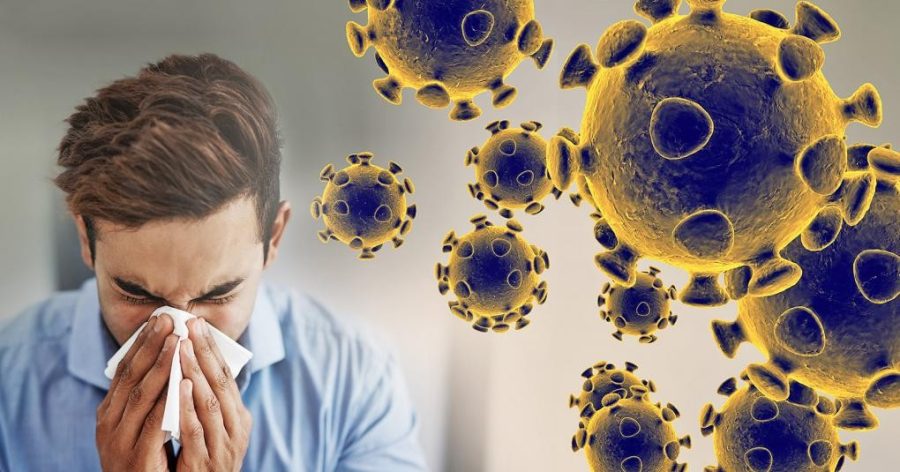Nearly a month ago, on March 10, the U.S. had about 1,000 confirmed cases of COVID-19. Today, on April 7, the nation has a little over 12,000 confirmed deaths from the disease.
What started out as an outbreak localized to one country has turned into a pandemic that has taken siege to at least 209 countries and territories and about 81,000 lives across the globe.
With nearly 1.4 million confirmed cases around the globe and about 380,000 confirmed cases in the U.S. alone, COVID-19 requires adequate testing, ideally for every patient who presents with symptoms. But what is the process for testing, and is there more than one type of test?
RELATED: UA College of Medicine to hold graduation early in light of COVID-19 pandemic
There are different ways to test for the novel SARS-CoV-2 virus, but the two most common ways are a molecular test and a serological test. Let’s break these down.
RT-PCR test:
The process for a molecular test, also called a RT-PCR test, involves a swab that reaches the back of the throat through the nose. After the test if completed, patients will typically be asked to return back home and self-quarantine until the results come back. Sound fun?
The sample from the swab will undergo a polymerase chain reaction, or PCR, test in a laboratory which is able to look for the genetic material of the SARS-CoV-2 virus: RNA.
The enzyme reverse transcriptase, or RT, is able to convert the RNA from the sample into DNA. The newly formed DNA is amplified using the PCR test, which can form a million copies of the DNA in the matter of just 20 cycles. PCR is a relatively quick and effective way to amplify genetic material in order to get a measurable result.
Typically, a fluorescent dye is added to the sample of (now increased) DNA in order to detect its presence. If the patient has the SARS-CoV-2 virus, then the RNA will be converted to DNA and then amplified, and then the dye will cause fluorescence, which allows the scientists to visualize the results. Voila, the patient tests positive.
On the other hand, if the patient is not infected with the virus, there will be no RNA in the first place, so no DNA can be formed from reverse transcriptase enzyme. No DNA can be amplified and no fluorescence can be visualized.
Serologic antibody test:
The antibody test is very different than the RT-PCR test. In principle, as the name implies, this test looks for antibodies in the patient’s blood. When a person becomes infected, their immune system produces antibodies as a way of fighting off the infection. Typically, these antibodies last for a while after the infection is gone to help protect the individual from a future reinfection.
A serologic antibody test usually involves taking blood from a patient and can be done with the prick of a finger. It definitely sounds a little bit easier than sticking a swab through the nose to get to the back of the throat.
A key difference between the two tests is when they would yield positive results.
An RT-PCR test will give a positive result when the patient is actively infected, as in the virus is currently in their body. Once the virus is eliminated, the patient will not test positive (given no false positives) because the virus is not present anymore.
On the other hand, a serologic antibody test will test positive as long as there are antibodies in the patient’s blood, which can last for months. Antibodies against the influenza virus from the vaccine typically lasts about 6 months and protection typically declines from decreasing antibody levels or mutations in virus strains. So, as long as the patient has antibodies, a serologic antibody test will give a positive result (given no false negatives).
Antibody tests are game changers. An individual who displays no symptoms would have no incentive to get their nose and throat swabbed and go through the hassle of getting the RT-PCR test. Interestingly enough, a quick antibody test can let that individual know if they are infected but just asymptomatic, meaning they display no symptoms since they still have antibodies from fighting the infection.
RELATED: Is a vaccine the silver lining of the COVID-19 pandemic?
New research from the Centers for Disease Control has indicated that as high as one out of every four (25%) infected individuals actually remain asymptomatic. These individuals can ignore social distancing guidelines and unknowingly continue to spread the virus to others, perhaps to those who are more vulnerable to death from infection, such as the elderly part of the population.
As the pandemic continues to spread around the nation and globe, testing will become all the more important. As always, continue to follow CDC guidelines regarding social distancing and how to slow the spread of the novel coronavirus.
Follow Amit Syal on Twitter









